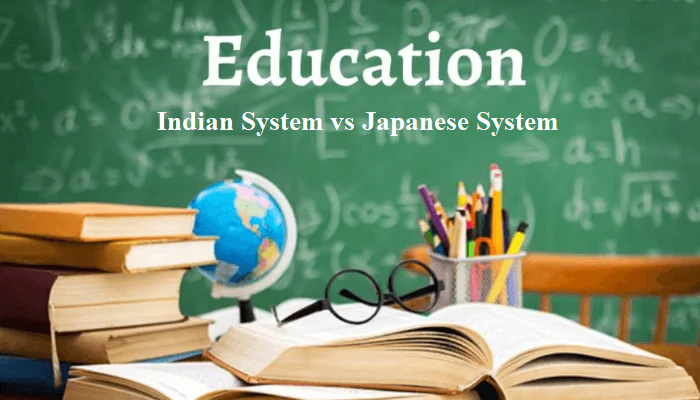Indian Education System vs Japanese Education System – Comparison in 2025
Published: August 2025 | Category: Education.
The education systems of India and Japan are two of the most influential in Asia, but they follow very different paths. While India focuses heavily on academic excellence and exams, Japan prioritizes discipline, character development, and group harmony. In this article, we’ll compare both systems in terms of structure, values, student life, teaching methodologies, and global performance. In 2025 Artificial Intelligence (AI) is no longer just about automation—it is about true transformation with quantum-level computing power, real-time learning, and hyper-personalized experiences, AI has penetrated deep into industries that once resisted digital evolution
1. Structure and Curriculum
The Indian education system is broadly divided into pre-primary, primary, secondary, and higher education. A recent update, the NEP 2020 (New Education Policy), aims to reduce rote learning and promote conceptual understanding.
On the other hand, the Japanese system is structured into 6 years of elementary, 3 years of junior high, and 3 years of senior high school, followed by university. Japanese schools emphasize **practical learning, ethics, and teamwork** from an early stage.
2. Discipline and Student Behavior
Discipline is a cornerstone of Japanese education. Students clean their classrooms, manage lunches, and take responsibility for cleanliness. This instills respect, orderliness, and a collective mindset.
Indian schools also value discipline, but it's often enforced rather than encouraged through student-driven actions. There’s limited focus on responsibilities beyond academics.
3. Creativity vs Academic Pressure
Japanese schools allow space for creativity, sports, and club activities. Their approach encourages students to become well-rounded individuals. Academic stress exists but is balanced with extracurricular freedom.
India’s system traditionally prioritizes board exams and competitive tests like JEE or NEET, putting immense pressure on students. While some reforms are introducing creativity and coding in classrooms, it remains exam-centric.
4. Teacher-Student Relationship
Japanese teachers often stay with the same group of students for several years, building trust and mutual respect. Teaching is viewed as a noble, high-status profession in Japan.
In India, teachers are respected, but the bond can be formal and academically focused. Frequent transfers and large class sizes reduce personalized attention.
5. Assessment System
India's assessment is mostly exam-based with high competition and ranking systems. Japan evaluates through regular tests, class participation, attendance, and behavior. Final exams are important, but not the sole factor in advancement.
6. Technology Integration
Post-COVID, both countries increased the use of digital tools. Japan emphasizes hybrid learning with AI-driven platforms and robotics in classrooms. India is catching up fast with smart classrooms, EdTech apps, and coding programs introduced in government schools.
7. Language of Instruction
Japan teaches primarily in Japanese, with English as a second language. In India, education is available in multiple regional languages along with English, especially in private schools. However, this diversity sometimes leads to disparities in quality and comprehension.
8. Moral Education
Japan includes moral science and social behavior training as a part of the curriculum. Students are taught empathy, teamwork, and conflict resolution.
In India, moral science exists in primary school but is not emphasized at higher levels. There's a growing demand for character-building education alongside academics.
9. Higher Education & Global Ranking
Japan's universities, like the University of Tokyo and Kyoto University, rank among the top globally. India is working to raise the standard of IITs and IIMs with global collaborations and the “Study in India” initiative.
However, brain drain remains a concern in both countries, as students often prefer foreign institutions for research opportunities.
10. Which System is Better?
Both education systems have strengths and weaknesses. Japan’s model promotes life skills, discipline, and holistic development, while India’s evolving NEP 2020 is trying to shift from rote learning to conceptual education and skill development. The future lies in adopting the best of both worlds – rigorous academics with creative freedom, discipline with compassion, and innovation with tradition.
Conclusion
As we step into a rapidly changing world in 2025, education systems must evolve to meet global demands. By learning from each other, India and Japan can build education systems that not only produce engineers or scholars, but responsible, innovative, and empathetic global citizens. Connect with us via our contact page for daily updates.

Leave a Comment